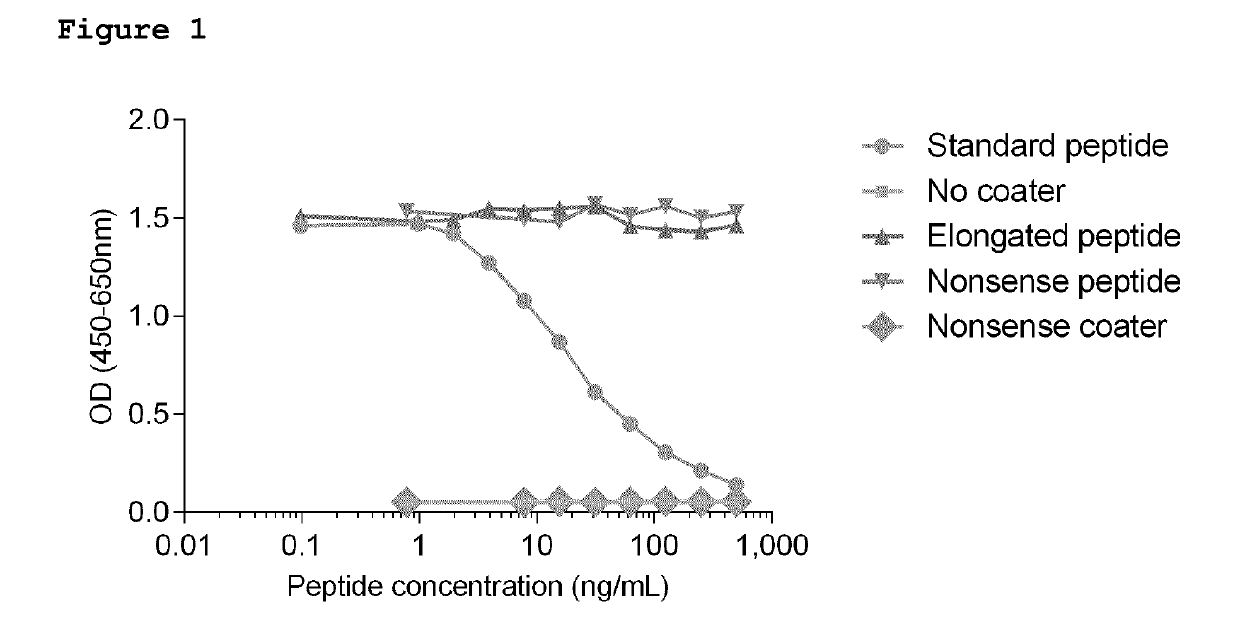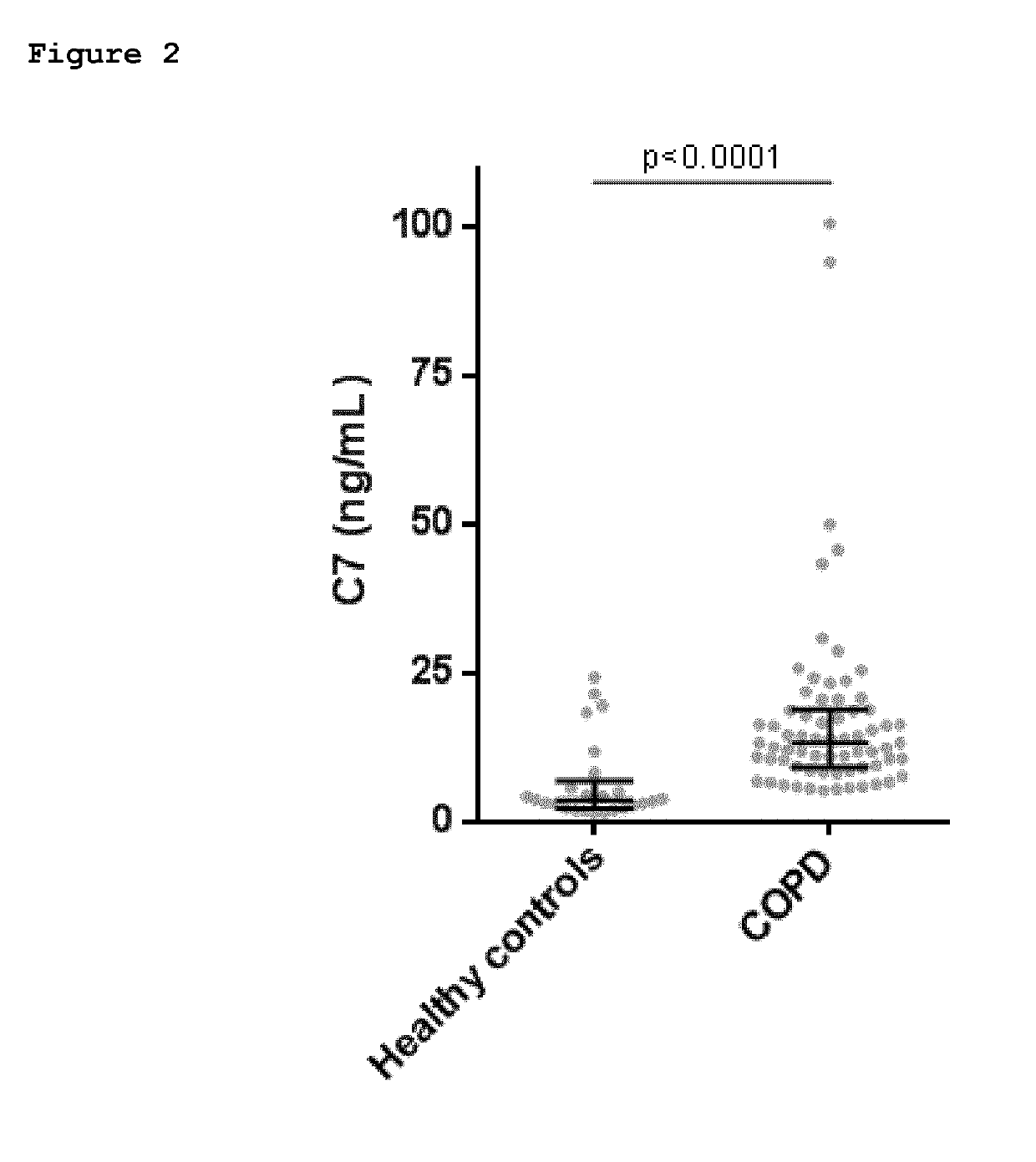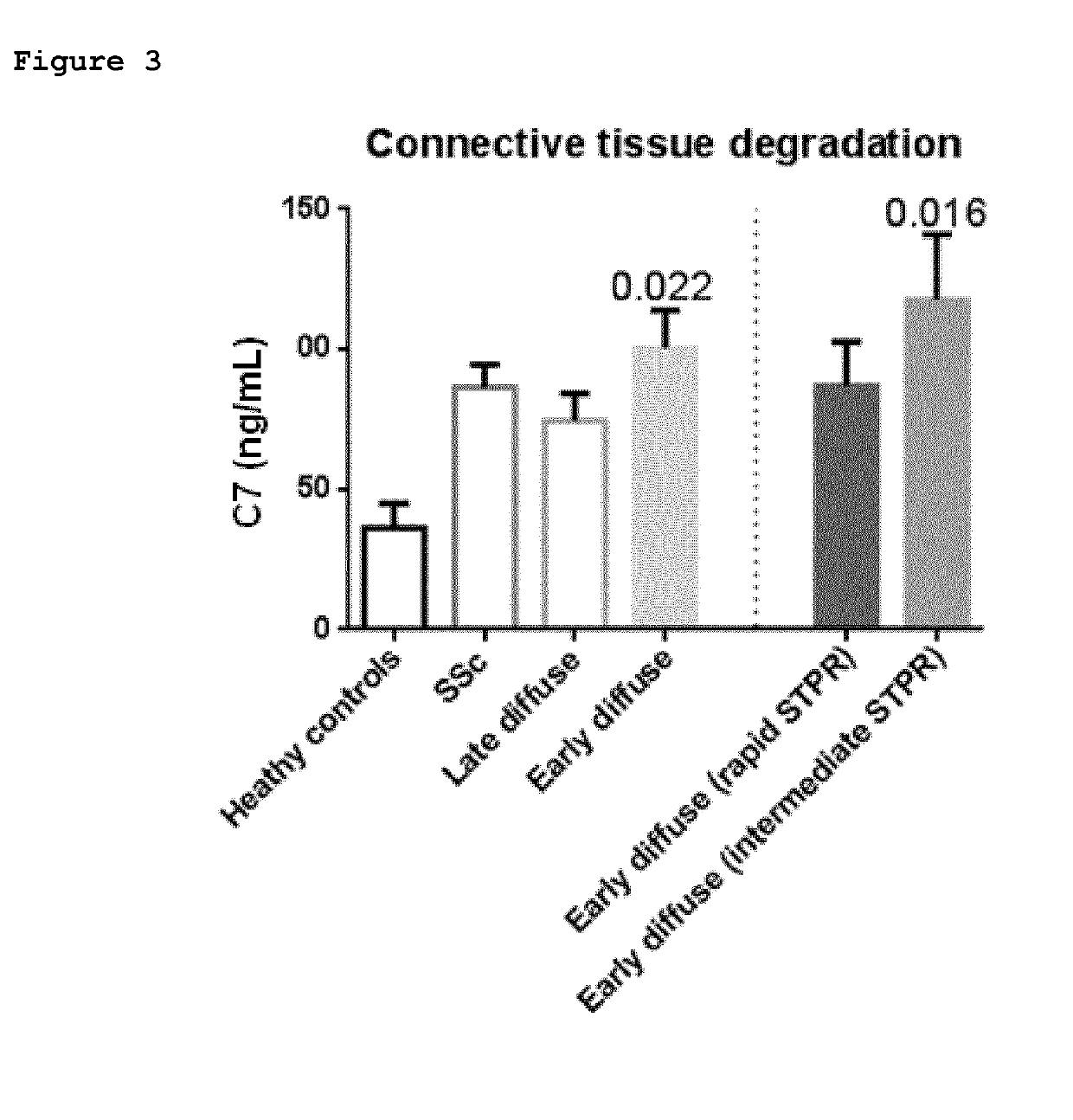Collagen type vii alpha 1 assay
a collagen type and assay technology, applied in the field of antibodies, can solve the problems of skin blistering, separation of epidermis and dermis,
- Summary
- Abstract
- Description
- Claims
- Application Information
AI Technical Summary
Benefits of technology
Problems solved by technology
Method used
Image
Examples
example 1
[0051]Rationale
[0052]Mass spectrometry was performed on serum samples from a patient with COPD, a patient with idiopathic pulmonary fibrosis (IPF), and a healthy donor.
[0053]The initial mass spectrometry analyses identified peptides derived from collagen type VII in serum. Peptides were isolated from serum using IMAC Cu beads. Identity significance threshold for individual peptides were 51. Serum samples were analyzed using an orbitrap (OrbiB) instrument.
[0054]Fragments of collagen type VII alpha 1 comprising the C-terminal neo-epitope GPPGPPGRLV-COOH (“C7”) (SEQ ID NO: 1) were found in the COPD sample but not in the IPF or healthy donor samples. The neo-epitope corresponds to the cleavage site located between amino acids Val-Asp at positions 1709-1710 of human collagen type VII. The protease responsible for this cleavage is as yet unknown. The sequence was analyzed using BLAST and was found to be unique for the collagen type VII alpha-1 chain.
[0055]Antibo...
example 2
“NB677” Assay
[0071]The signal peptide in collagen type VII alpha-1 is found at amino acids 1-16 [12]. The N-terminal neo-epitope sequence that is formed by cleavage of the signal peptide (17, ‘EAPRVRAQHR’ 26) was analyzed using BLAST and was found to be unique for the collagen type VII alpha-1 chain.
[0072]Following the success of the “C7” assay for COPD, it is postulated that this unique collagen type VII alpha-1 neo-epitope may also be useful in the identification and / or evaluation of COPD and / or systemic sclerosis.
[0073]Antibody
[0074]Accordingly, a monoclonal antibody was raised against the N-terminal neo-epitope amino acid sequence H2N-EAPRVRAQHR (SEQ ID NO: 4).
[0075]Briefly, four to six-week-old Balb / C mice were immunized subcutaneously with 200 μL emulsified antigen and 50 μg of a NB677 synthetic peptide (EAPRVRAQHR-GGC-KLH, SEQ ID NO: 12) using Freund's incomplete adjuvant. Immunizations were performed every 2nd week until stable sera titer levels were reached. The mouse with ...
example 3
[0079]The C7 ELISA was evaluated in a second, larger cohort of patients with systemic sclerosis (SSc). The C7 ELISA was re-calibrated (compared to the previous example) to improve accuracy of the assessments in human serum.
[0080]Results: The biological relevance of the C7 ELISA was evaluated by comparing serum levels in healthy donors (n=70) with patients with SSc (n=119). Data are shown in FIG. 5. Median serum C7 level was significantly elevated in patients with SSc (9.3 ng / mL [IQR 6.7-13.2]) as compared with healthy donors (3.9 ng / mL [IQR 2.3-8.3 ng / mL]; p<0.0001).
[0081]The clinical data support that serum C7 levels are elevated in patients with SSc
[0082]In conclusion, the novel assays described herein utilise antibodies specific for an N- or C-terminal neo-epitope of collagen VII alpha 1. To the best of our knowledge, this is the first time that collagen type VII has been associated with COPD. Accordingly, it is envisaged that these assays may be used for assessing COPD as well a...
PUM
| Property | Measurement | Unit |
|---|---|---|
| pH | aaaaa | aaaaa |
| pH | aaaaa | aaaaa |
| concentration | aaaaa | aaaaa |
Abstract
Description
Claims
Application Information
 Login to View More
Login to View More - R&D
- Intellectual Property
- Life Sciences
- Materials
- Tech Scout
- Unparalleled Data Quality
- Higher Quality Content
- 60% Fewer Hallucinations
Browse by: Latest US Patents, China's latest patents, Technical Efficacy Thesaurus, Application Domain, Technology Topic, Popular Technical Reports.
© 2025 PatSnap. All rights reserved.Legal|Privacy policy|Modern Slavery Act Transparency Statement|Sitemap|About US| Contact US: help@patsnap.com



